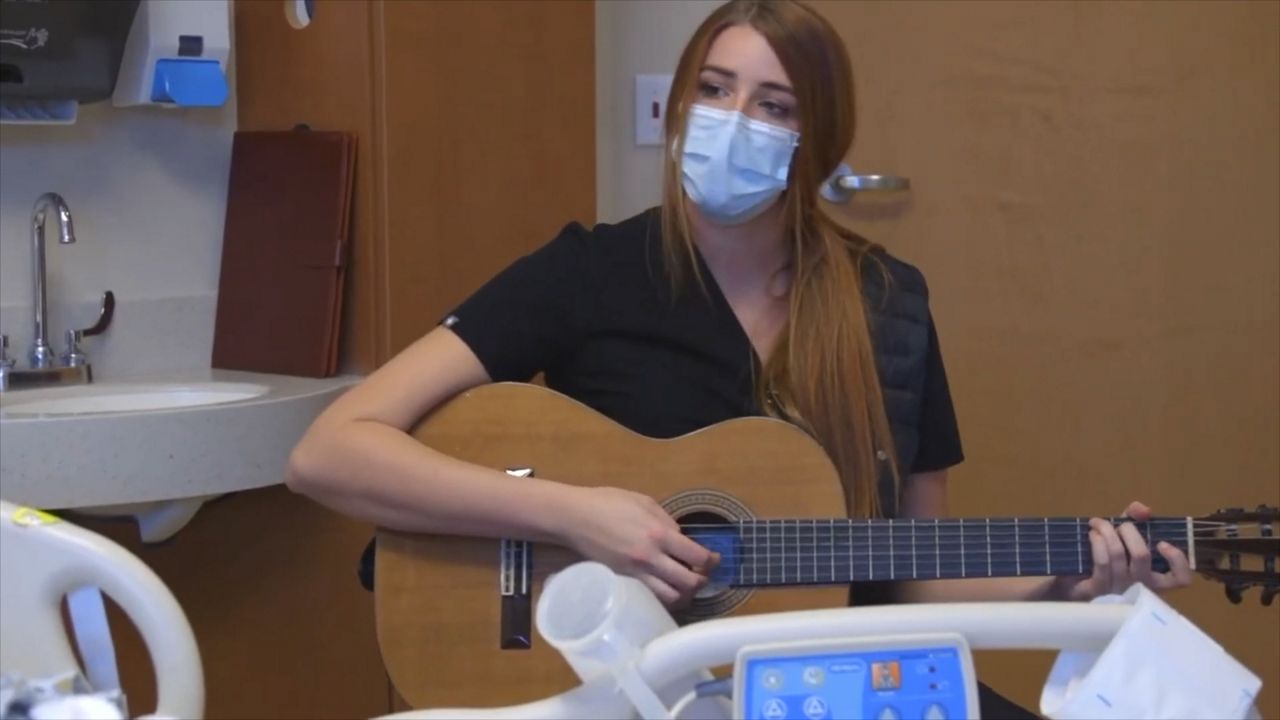OHIO — Nurses pushing stretchers and people awaiting treatment are often an image of an emergency room. Unless someone walks inside University Hospitals Cleveland, and they might hear music playing as well.
Ohio is one of the eight states that has been greatly affected by the opioid epidemic, according to the National Institutes of Health. The opioid rate doubled every three years from 1999 to 2016.
Clinical researcher Sam Rodgers-Melnick said they’re using alternative ways to help patients.
“I would describe our work as evidence based non-pharmacological modalities, music therapy, acupuncture,” Rodgers-Melnick said. “For a very long time, the primary pain treatment has been opioids, which may help pain a little bit but also involves a lot of risk and involves constipation and different kinds of side effects.”
The hospital received $1.5 million to combat the opioid epidemic from the Department of Health and Human Services.
This money came through its Substance Abuse and Mental Health Services Administration for this alternative therapy program, according to University Hospitals.
Dr. Ryan Marino, emergency medicine physician with University Hospitals, said they will still give medication when needed while they expand their treatment options.
“This grant is looking at alternatives to opioid treatment in the emergency department and so, I think everyone at this point is pretty familiar with the issues around opioids that we have this quote unquote opioid epidemic going on,” Marino said. “Nothing is being withheld; we’re just trying to look at ways to kind of more comprehensively treat pain and to increase our options.”
The way alternative methods work is by assessing the patient, Rodgers-Melnick said.
One example is when they decide to work on someone with musical therapy.
“We would need somebody in the midst of a pain that they’re having. We would do an assessment of where that pain is, if anything is stressing them out.” Rodgers-Melnick said. “We might make a piece of music that the patient really likes, whether that’s R&B, gospel, classic rock and one intervention we do a lot is we would gradually slow that music down.”
Rodgers-Melnick said they will collect information for the next three years on how well these treatments work.
Their goal is to make these treatments accessible to as many people as possible and improve the quality of life.
“That could be the start of a journey to better manage their pain moving forward,” Rodgers-Melnick said.
link

